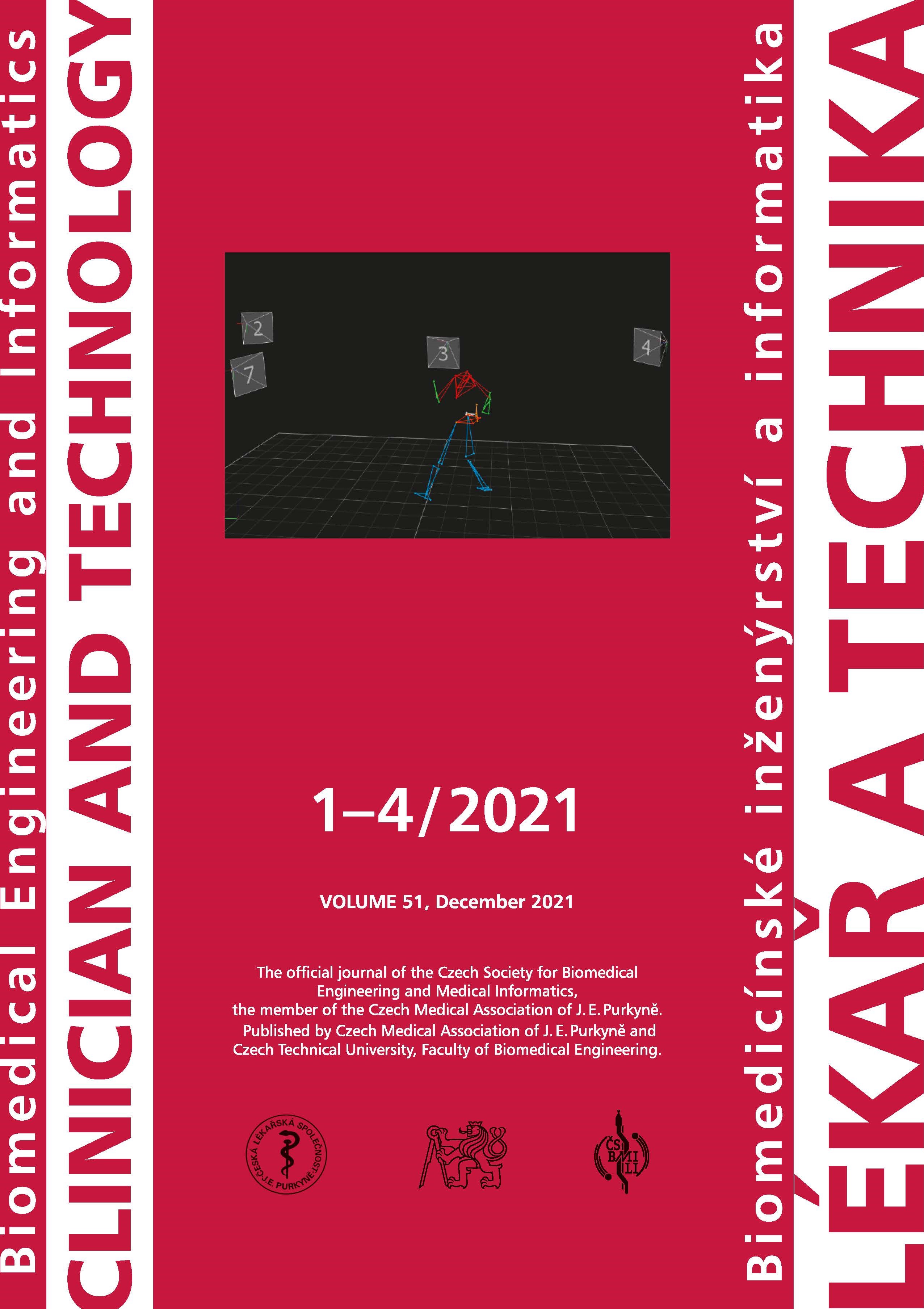EMG SIGNALS FOR FINGER MOVEMENT CLASSIFICATION BASED ON SHORT-TERM FOURIER TRANSFORM AND DEEP LEARNING
DOI:
https://doi.org/10.14311/CTJ.2021.1.02Abstract
An interface based on electromyographic (EMG) signals is considered one of the central fields in human-machine interface (HCI) research with broad practical use. This paper presents the recognition of 13 individual finger movements based on the time-frequency representation of EMG signals via spectrograms. A deep learning algorithm, namely a convolutional neural network (CNN), is used to extract features and classify them. Two approaches to EMG data representations are investigated: different window segmentation lengths and reduction of the measured channels. The overall highest accuracy of the classification reaches 95.5% for a segment length of 300 ms. The average accuracy attains more than 90% by reducing channels from four to three.
Downloads
Published
Issue
Section
License
Copyright (c) 2022 Ivana Kralikova, Branko Babusiak, Lubomir Kralik

This work is licensed under a Creative Commons Attribution 4.0 International License.
Authors who publish with this journal agree to the following terms:
- Authors retain copyright and grant the journal right of the first publication with the work simultaneously licensed under a Creative Commons Attribution License (https://creativecommons.org/licenses/by/4.0/) that allows others to share the work with an acknowledgment of the work's authorship and initial publication in CTJ.
- Authors are able to enter into separate, additional contractual arrangements for the non-exclusive distribution of the journal’s published version of the work (e.g., post it to an institutional repository or publish it in a book), with an acknowledgment of its initial publication in this journal.
- Authors are permitted and encouraged to post their work online (e.g., in institutional repositories or on their website or ResearchGate) prior to and during the submission process, as it can lead to productive exchanges.
CTJ requires that all of the content of the manuscript has been created by its respective authors or that permission to use a copyrighted material has been obtained by the authors before submitting the manuscript to CTJ. CTJ requires that authors have not used any copyrighted material illegally, as for example a picture from another journal or book, a photo, etc. It is the author’s responsibility to use only materials not violating the copyright law. When in doubt, CTJ may ask the authors to supply the pertinent permission or agreement about the use of a copyrighted material.
The opinions expressed in CTJ articles are those of authors and do not necessarily reflect the views of the publishers or the Czech Society for Biomedical Engineering and Medical Informatics.


